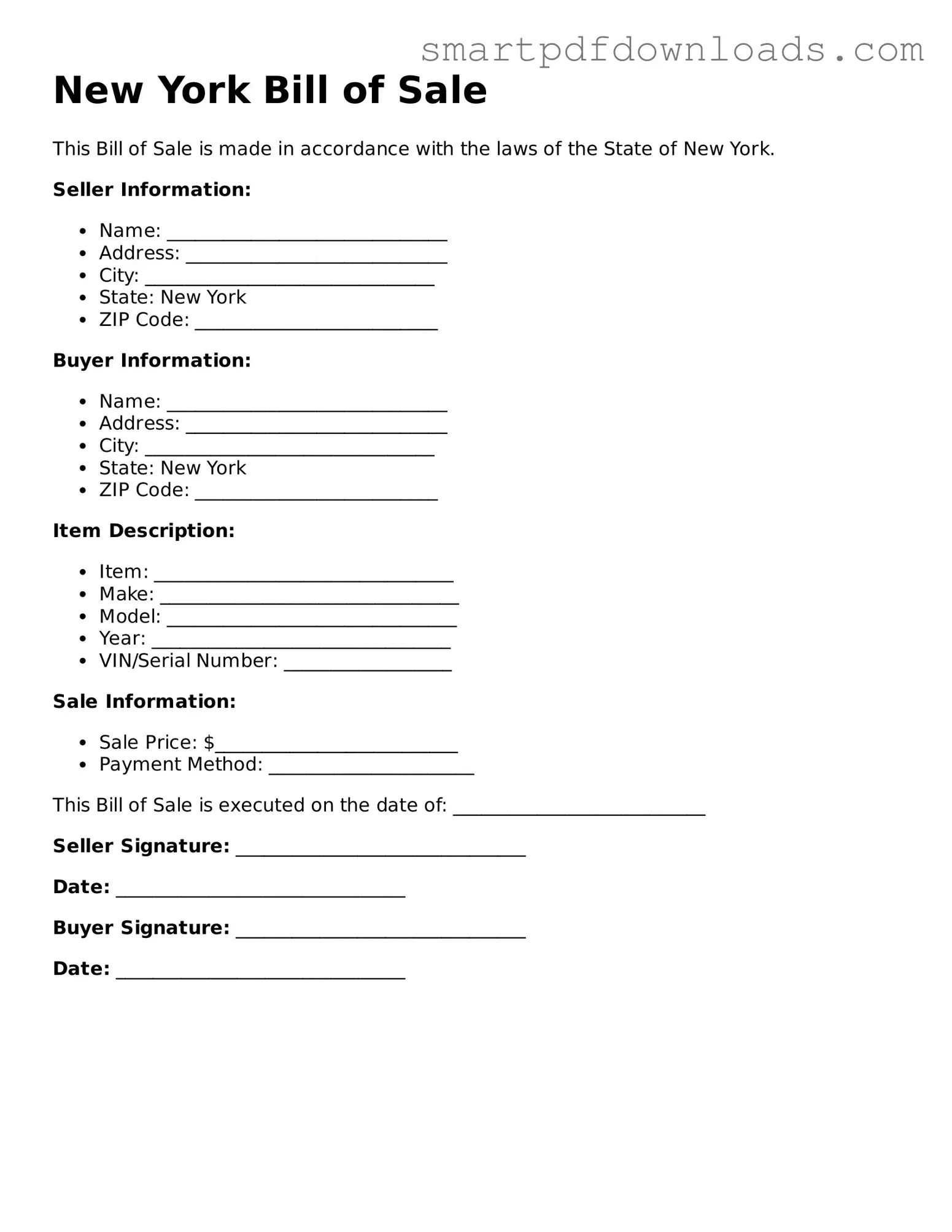New York Bill of Sale
This Bill of Sale is made in accordance with the laws of the State of New York.
Seller Information:
- Name: ______________________________
- Address: ____________________________
- City: _______________________________
- State: New York
- ZIP Code: __________________________
Buyer Information:
- Name: ______________________________
- Address: ____________________________
- City: _______________________________
- State: New York
- ZIP Code: __________________________
Item Description:
- Item: ________________________________
- Make: ________________________________
- Model: _______________________________
- Year: ________________________________
- VIN/Serial Number: __________________
Sale Information:
- Sale Price: $__________________________
- Payment Method: ______________________
This Bill of Sale is executed on the date of: ___________________________
Seller Signature: _______________________________
Date: _______________________________
Buyer Signature: _______________________________
Date: _______________________________
